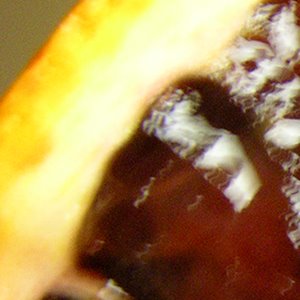
Editor’s Note--Stung
Blood Orange Review 3.4
In a story from this new issue, “Once the Queen Is Gone” by Jeremy Griffin, one character chooses to study biochemistry, specifically the pheromones of honeybees, after being attacked by a hive that results in a week’s stay in the hospital. In the same story, the main character arrives on the doorstep of a former lover to “tell her things about love and fulfillment and mistakes and forgiveness,” or, on second thought, maybe just to see what might happen. Drawn to what has stung them, both characters find themselves pinned between what they separately want and fear.
The poems of Jeff Hanson reveal a person seeking to remake himself, and in one instance, getting what he wants only to find he can’t handle it. In “The Artist’s Father” by Brently Johnson, a father watches his son and weighs, self-consciously, whether it’s the moment itself or the preservation of that moment through language that matters more. “Avalanche” by Gregory Lawless offers a speaker tumbling through life after life hoping eventually to get it right. Poem after poem, story after story, the voices in this issue waver then begin, ever so slightly, to tip.
Jim Fagiolo’s unnervingly beautiful landscapes appear as monumental still lifes. Look at “Ruby Lake” or “Portage Glacier” which serves as the doorway to our new issue; so clear and reflective, the water seems to point to the impossibility of it staying that way. If you found yourself on a dock like the one in “Blue Lake,” how could you not throw a stone out and ruin all that stillness?
I’m drawn to the way the work here pulls the reader into that frozen moment through words or images. We’re along for the ride as the subjects, for better or worse, try to make something happen. It feels right that they don’t always know what they want or where they’re going or why they do the things they do. Rattled or wounded, the subjects take us out of our own uncertainty and give us the uncertainty of someone else to ponder for a while. Thank you, literature and art; it’s exactly what we need right now.
Stephanie Lenox, editor
Blood Orange Review
PS – In this issue, the editors have selected several works to be nominated for a Pushcart Prize. We’re thankful for the work in this issue and in all the ones we’ve published, which after stinging us once, continues to draw us toward it.









